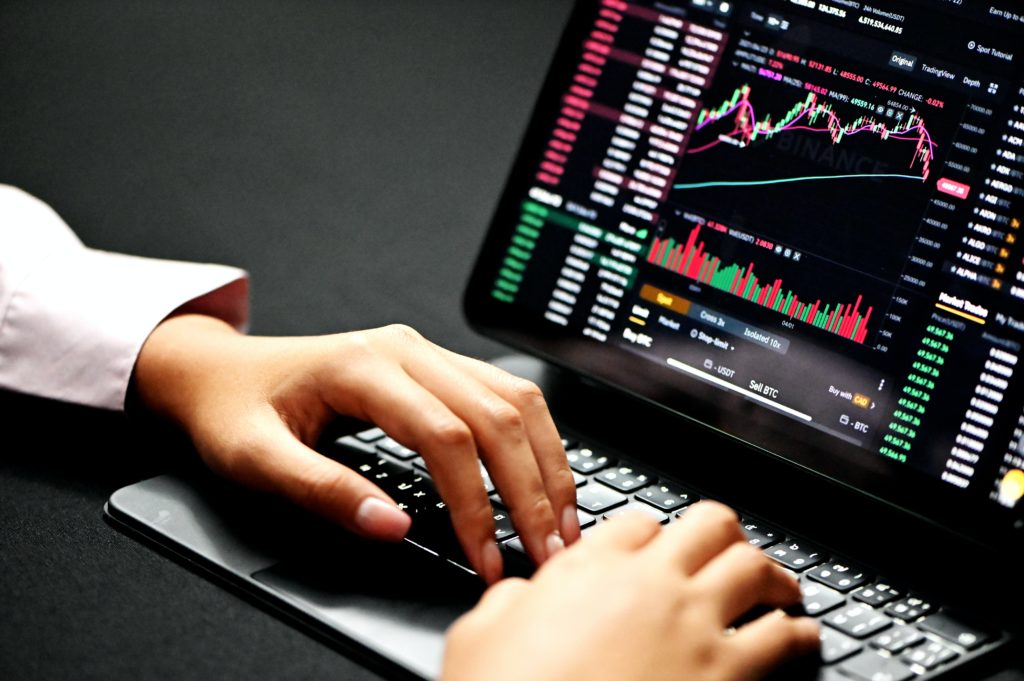
Among the many markets available for traders, the foreign exchange (forex) market is the largest and most liquid in the world. Every day, the mountain of trades being executed can amount to trillions worth of dollars.
Trading on forex takes extensive knowledge, skill, and discipline, to devise the best strategies for effective trading. Even the most seasoned professionals need to continuously harness accurate trading plans in order to gain a profit on their trade returns, and minimise as much risk as possible.
However, there are many people who are only just entering the world of forex trading, and need a thorough understanding of the fundamentals. This will enable you to start your forex trading experience with all the necessary knowledge for success.
Therefore, this article will guide you through what forex trading is, and how the process is conducted by traders.
What is forex trading?
Forex trading works similarly to the traditional style of trading. You’re investing in an asset, with the goal of profiting from the asset’s price movements on the market. However, the difference with forex, is that the assets in question are currencies.
Every day, countries around the world are conducting foreign transactions, whether through trade, investment, loans, or various other forms. With each country having a specific currency, the transactions need to go through a currency exchange in order to be completed.
Every currency has a certain value compared to another. One particular currency might be in a position where it’s currently worth much more than another, so when making foreign transactions, this will be reflected in the exchange rate.
With forex trading, these currencies make up the market in which your trades take place. When making trades, you’re essentially exchanging one currency for another, with the aim of making a profit on the exchange.
This process is most commonly done using contracts for difference (CFD), and below, you will find how trades are usually made on the forex market.
How does forex trading work?
With forex, there are various ways that you can go about trading currencies, but to give you a more accurate understanding, we’ll detail the process of CFD forex trading, which is the most highly used method of trading on forex.
Unlike the traditional form of trading, when trading forex CFDs, you don’t own the underlying asset. Instead, you buy contracts (units) on an asset, which predicts the direction of movement for the asset’s price.
As mentioned earlier, the assets on forex are currencies. More specifically, these are known as currency pairs, as you can only make a currency exchange if there are two currencies involved.
Currency pairs are simply two different currencies that you’re exchanging. The base currency is the main (first) currency, and the quote currency is the second currency you’re valuing the base currency against.
An example might be trading the Euro (EUR) against the US Dollar (USD), which would form the forex pair EUR/USD. Your CFD position would speculate whether you expect the EUR to increase in value (buy position) against the USD, or decrease in value (sell position). Your profits or losses will be determined by how accurate your prediction is in regards to the pairs movement on the market.
So, let’s say you open a long position on the EUR/USD, potentially due to you analysing market performance which predicts its increase. If the price on the EUR rises against the USD, you can then sell at this higher price, and close the position with a profit. If the price decreases, your position would close with a loss – unless you opened a sell position instead, which profits off downward price movement.
This particular example pair is the most traded currency pair on the forex market. Each pair on the market will have different levels of volatility, meaning some will be more vulnerable to rapid changes than others.
One more thing to note, is that CFD forex trading also allows the use of leveraged trading. This is where you can gain greater exposure on a trade, with a significantly less capital deposit (known as a margin). The exposure you gain for your capital, will depend on the leverage ratio of the asset.
For instance, with a leverage ratio of 1:10, you can open a trade position on EUR/USD for up to £10,000, with a margin of only £1,000.
This will give you the chance of gaining a substantial profit on a trade, with a small amount of initial capital. However, on the flip side, this means your losses will also be substantial compared to your deposit. If you incurred a loss on this trade, for example, your losses would be calculated against the £10,000, not the £1,000.
—
Nevertheless, with the right strategies, the forex market can potentially yield highly profitable returns for traders. Now that you know the basics, you’re ready to begin asserting yourself as one of them.
https://www.varsity.co.uk/sponsored/how-does-forex-trading-work
2022-05-06 08:47:00Z
CBMiP2h0dHBzOi8vd3d3LnZhcnNpdHkuY28udWsvc3BvbnNvcmVkL2hvdy1kb2VzLWZvcmV4LXRyYWRpbmctd29ya9IBAA
Bagikan Berita Ini














0 Response to "How does forex trading work? (Sponsored content from Tifani Kaneva) - Varsity Online"
Post a Comment